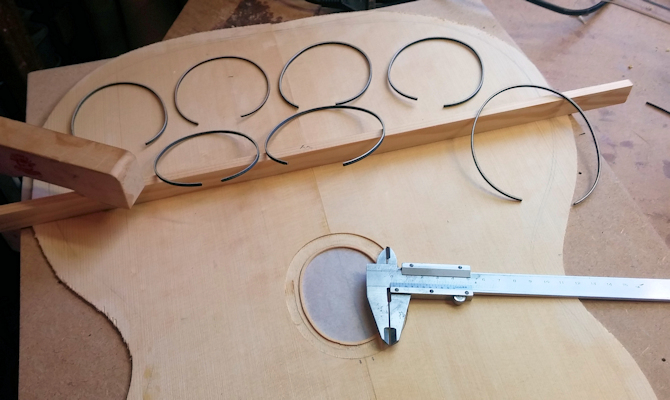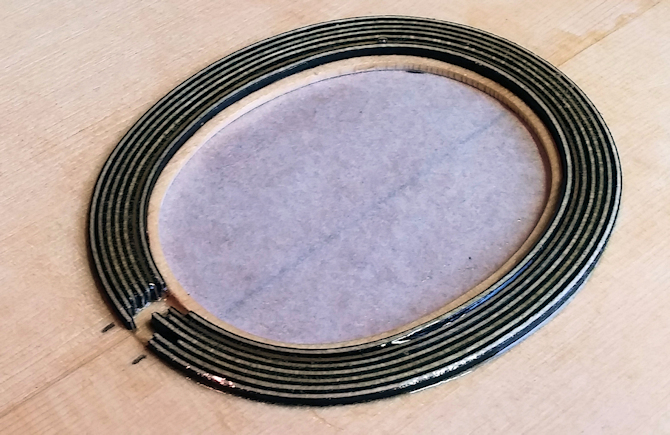After one night curing the excess was routed and sanded off. I took some time, because, again, the top is very thin. No room for flaws. The end of the rosette strips were cut in a straight line with a scalpel. A one millimeter thick piece of ebony was sanded in the right dimensions to fit in the rosette gap. It fills nicely. The allignment to the center of the top is quite good, but could be better. Yes, I too make flaws. I call it "personality", Ha!

All the braces of the top are 7mm/0.275" wide. The vertical braces have a flat bottom. The horizontal braces 1 and 2 have a 12' radius ,number 3 and 4 have 7 'radius. Quite curvy. My worries did conciern number 5, the lowest one.
The book of Michael Collins mentions it has a 7' radius. But in my stubborn calculations, it would result in a high part behind the bridge. And according to the French plan I have, the slope behind the bridge is straight down to the tail. So a did some thinking and my conclusion is to make the radius of that brace rather 12' (less high) instead of 7'. Shoot me if I am wong!?
The braces were glued one by one, with the top sitting on top of the radius caul, matching the individual braces.
I still need to profile the top of the braces. Does this Selmer design look heavy braced to you too? It does to me, but hey, I follow thw plan, so this is how it is.










